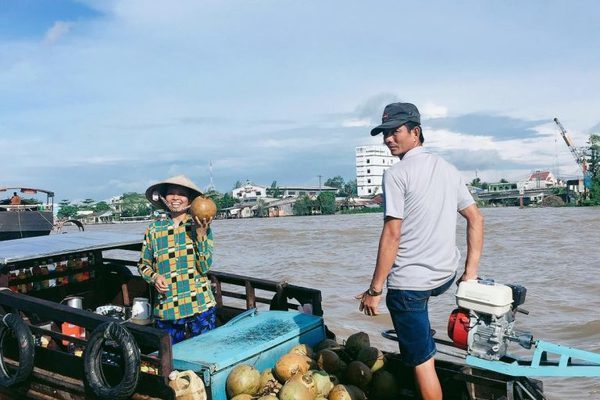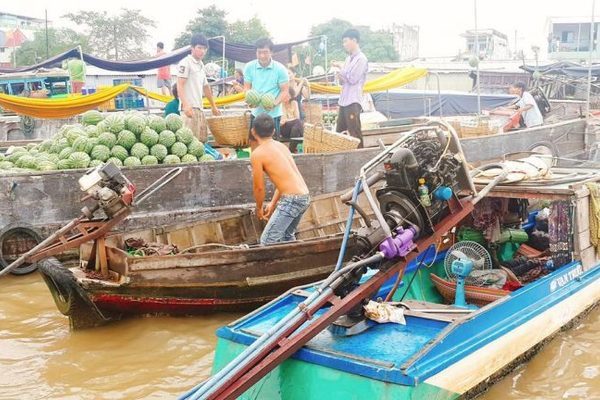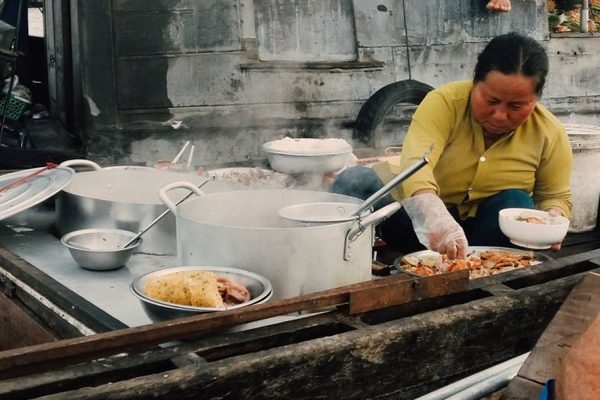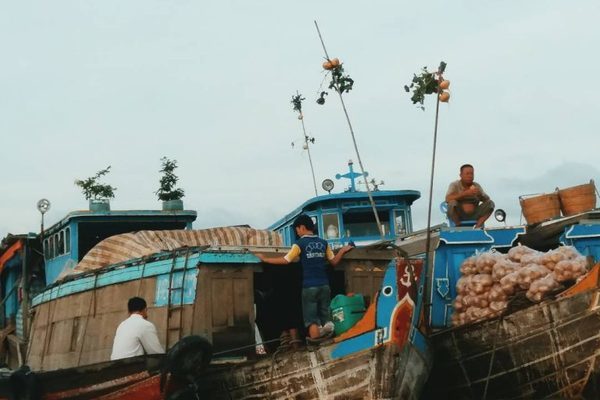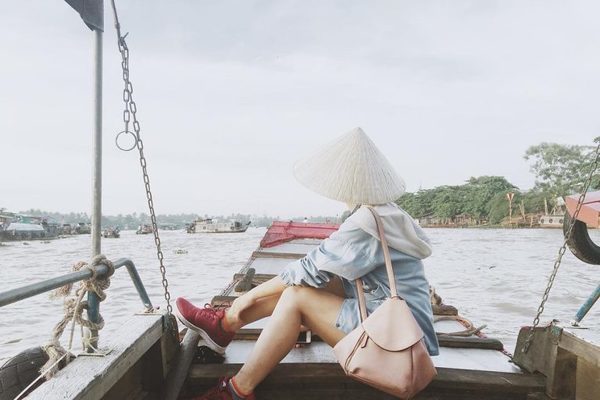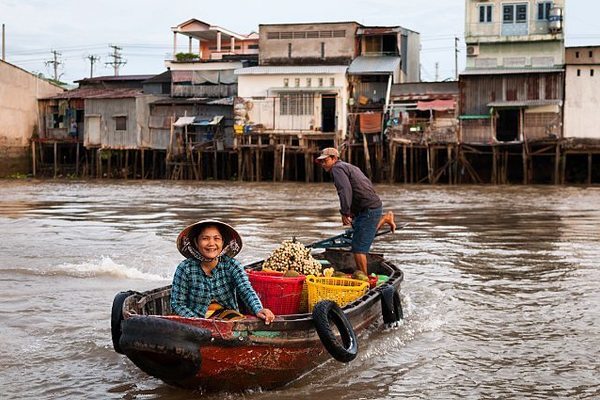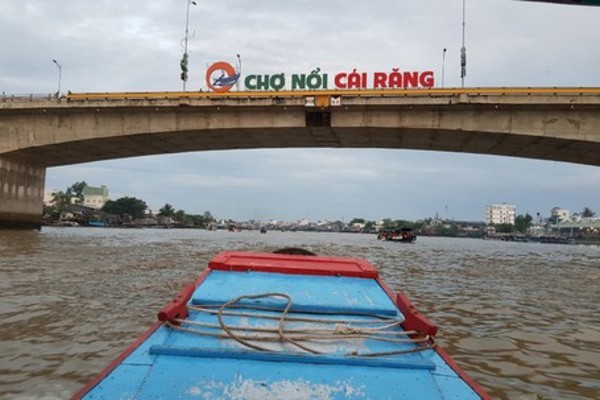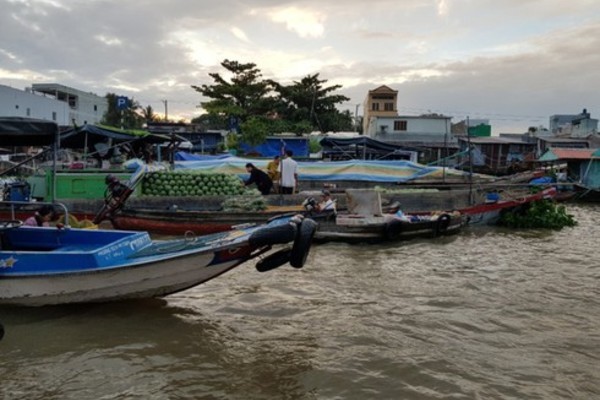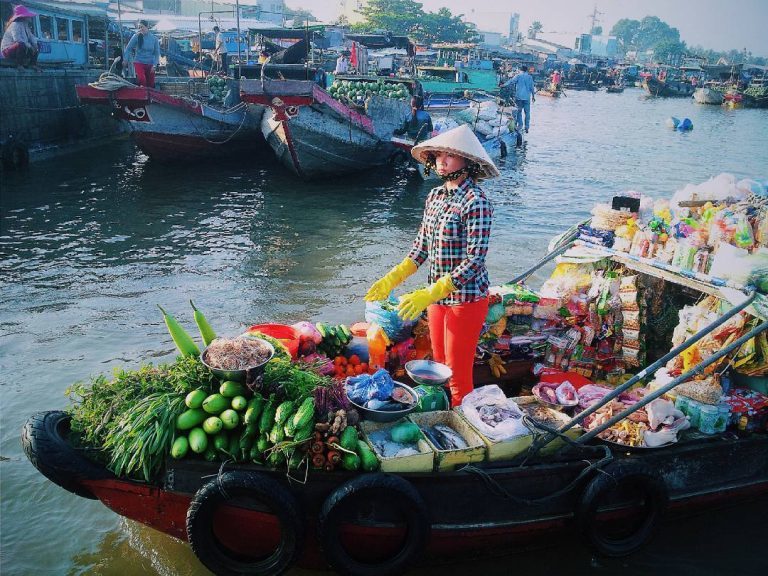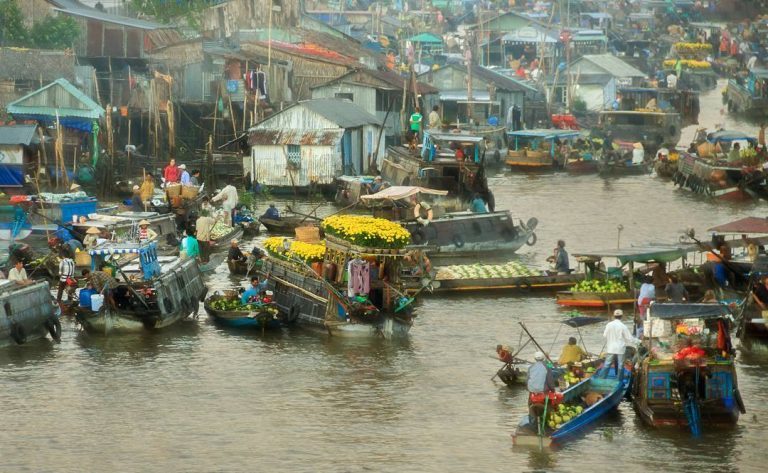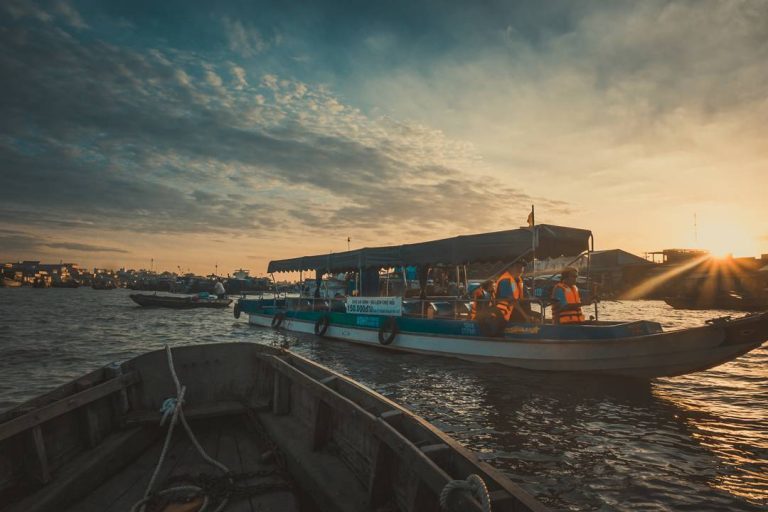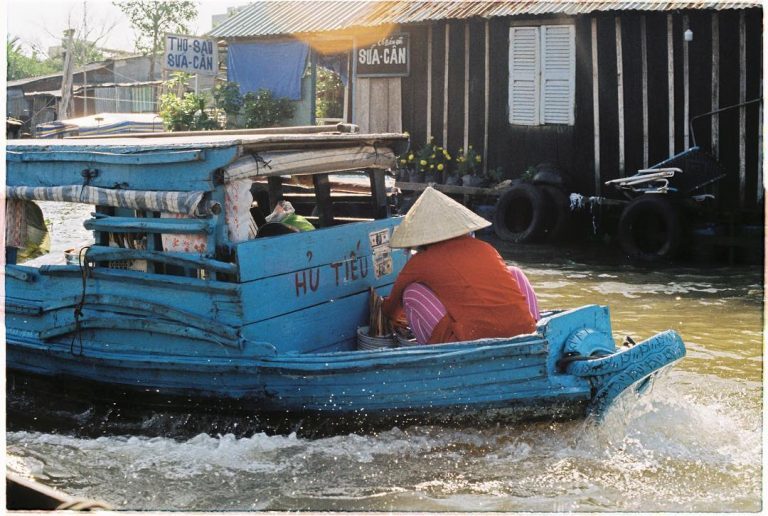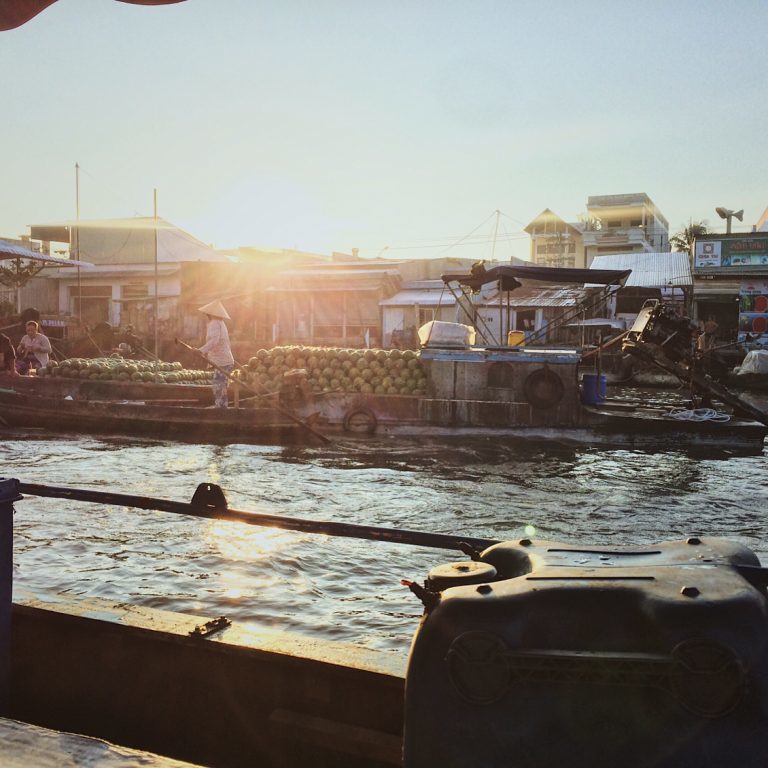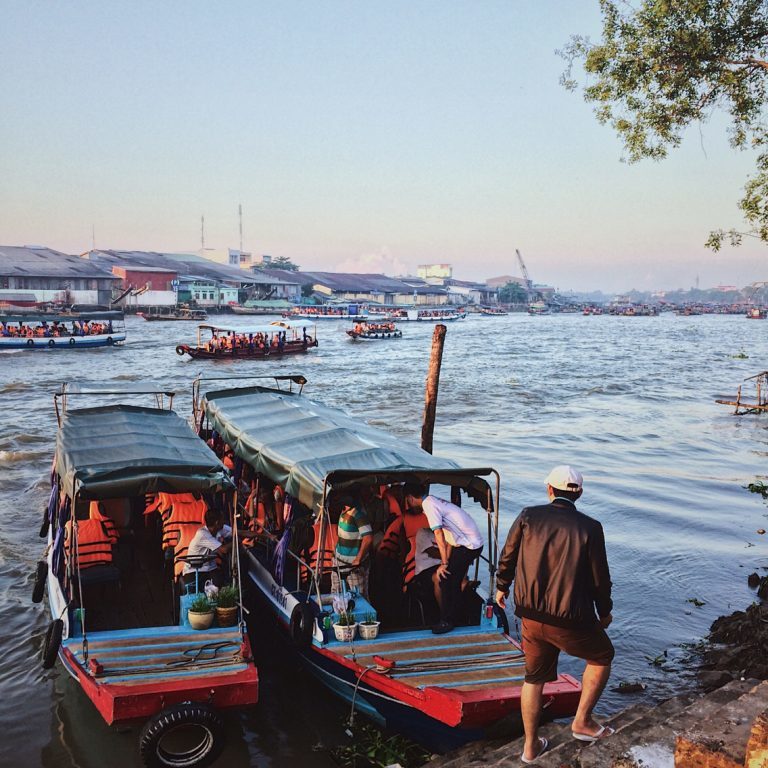Tourists flock to the bustling market, which keeps growing and bringing value to the locals in terms of economy, culture, and tourism.
The name “Cai Rang” comes from a Khmer word meaning “terracotta pots”, which the Khmer people in An Giang province used to make and sell in this area.
The Cai Rang floating market was begun in the early 20th century when the road system was still in its infancy. Its initial location was at the junction of four rivers (Can Tho, Dau Sau, Cai Son, and Cai Rang) right next to the Cai Rang land market.
In the 1990s, due to the disruption of waterway traffic it caused, the Cai Rang floating market was moved one kilometer further down the Can Tho river.
Vu Linh, a boatman who carries tourists to visit the Cai Rang floating market, told us another story behind its name: “This river links Can Tho to Ca Mau province, Kien Giang province, and Cambodia. In the old days, travelers often stopped here, which used to be a quiet area, to buy food in preparation for their long journey. It soon became a bustling market and was named Cai Rang after a village on the river bank.”
As one of the main trading centers in the Mekong Delta, the Cai Rang floating market is a place where the locals trade a wide variety of food, native fruits, and agricultural products. It’s crowded from dawn until 9am with hundreds of boats, each with a bamboo pole from which hangs the main product the boat owner is selling.
Nguyen Truong Son from Hanoi said, “It’s the bamboo poles that make the Cai Rang floating market unique. The fruits are fresh and diverse, and are often bought as gifts. The food here is also varied, from ‘hu tieu’ (rice noodles) to coffee, other drinks, and snacks. Visitors are treated to ‘don ca tai tu’ (southern opera) performed on boats. If I have a chance to return to Can Tho, the Cai Rang floating market will definitely be in my itinerary.”
Transportation to the floating market has evolved from dug-out boats to motorboats. There is now a floating petrol station on the river.
Nguyen Thi Ngoc Nga, who operates a boat service at Ninh Kieu wharf in Can Tho city, said, “Summer is the peak season for Vietnamese tourists. Foreigners are most numerous from October to the New Year festival. I have three boats, operating 5 or 6 tours a day. Visitors usually depart for the Cai Rang floating market at 5am and return here at 7am. Some tourists take a boat trip to the Binh Thuy ancient house, but actually the road trip is shorter.”
The UK's Rough Guide named the Cai Rang floating market one of the ten most impressive markets in the world, describing it as a place of fancy boats full of "tropical colors.”
The tourism website Your Amazing Places named Cai Rang one of the top six floating markets in Asia. The Cai Rang floating market was recognized as a national intangible cultural heritage in 2016.
Some photos of the market:
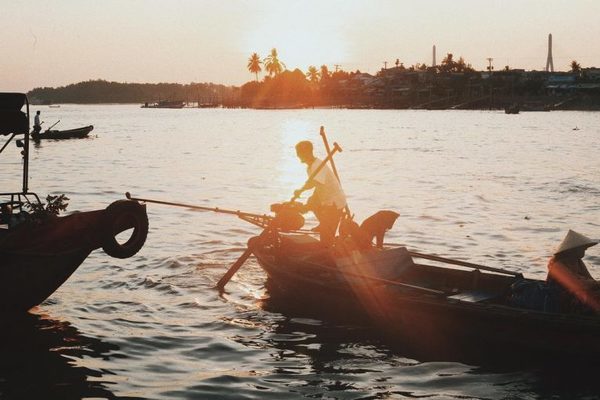 |
|
|
VOV5/VietNamNet/Zing
 The Cai Rang floating market on the Can Tho river, six kilometers from the center of Can Tho city, is a popular attraction in the Mekong Delta.
The Cai Rang floating market on the Can Tho river, six kilometers from the center of Can Tho city, is a popular attraction in the Mekong Delta.